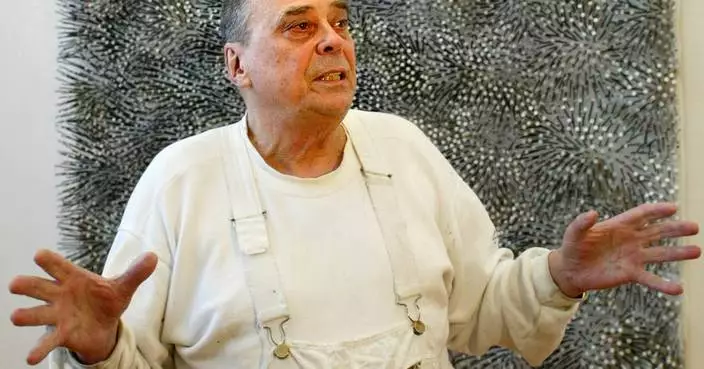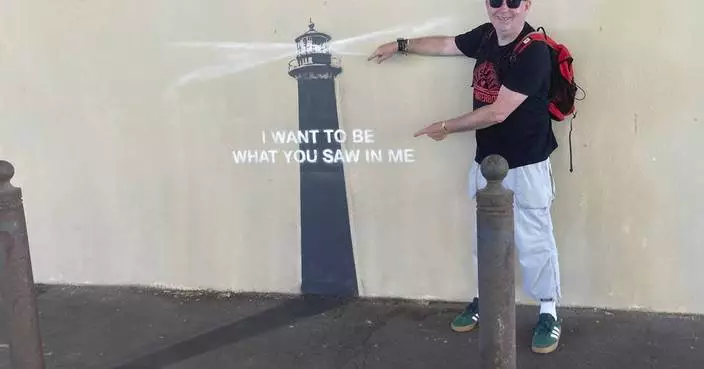Robin Baumgarten’s Quantum Garden is a follow up to an installation which featured at London’s King’s Cross last Christmas.
A German artist has used 228 spring door stoppers to create a fluorescent interactive artwork.
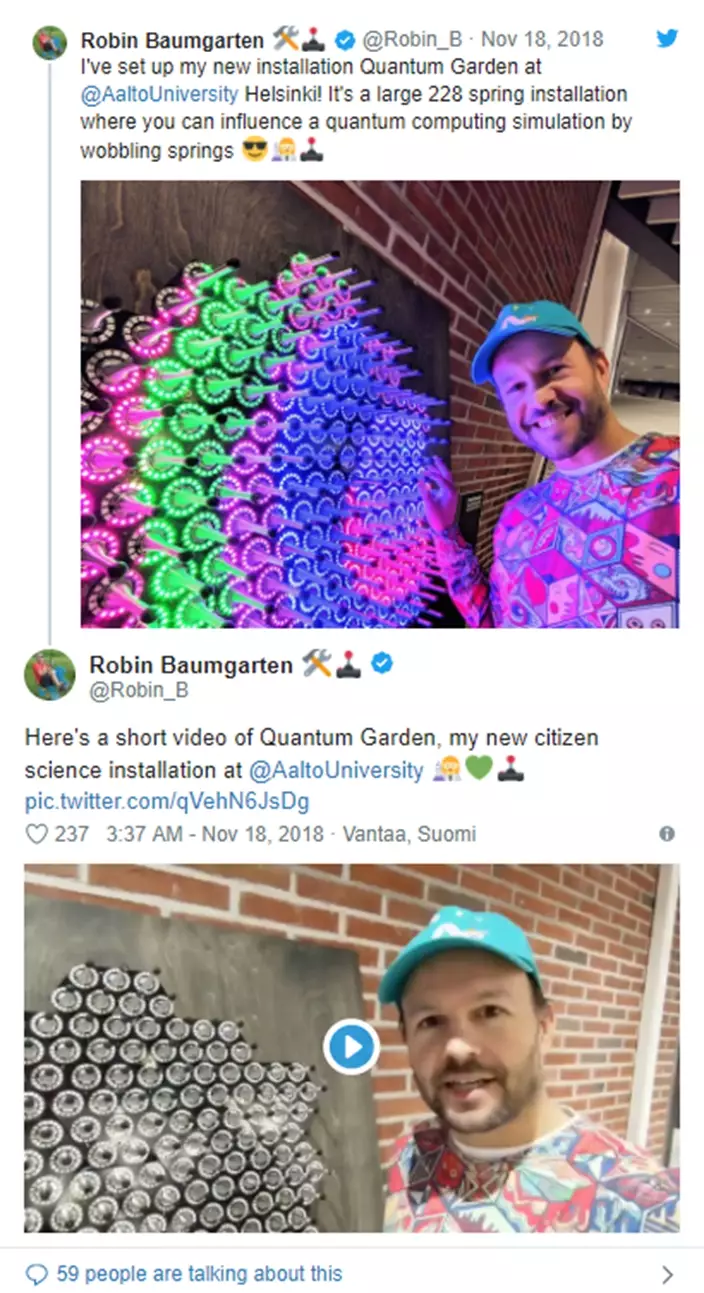
Robin Baumgarten, an experimental game developer based in London, paired the stoppers with 228 LED rings to create the piece, called Quantum Garden, which can be played with to create light shows.
Quantum Garden is a follow up to his multi award-winning piece Line Wobbler, which was displayed as a Christmas tree at King’s Cross station in London last year and is now homed in the Victoria and Albert Museum.
“I initially built a smaller version (of Quantum Garden) called Wobble Garden, basically for fun and pure enjoyment of the tactility of door stopper springs and the brightness of LEDs,” Baumgarten told the Press Association.
After a recommendation from friend Annakaisa Kultima, Baumgarten pitched a larger version to the Turku Centre for Quantum Physics (TCQP) in Finland, which in turn helped him with the coding.
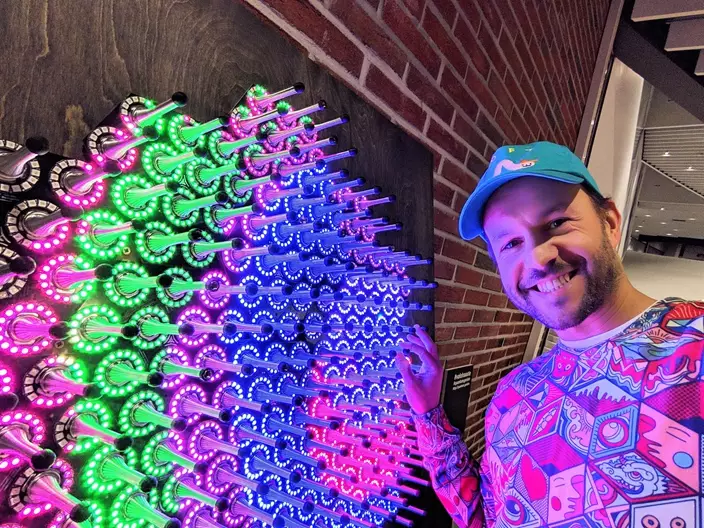
online photo
“The team around Professor Sabrina Maniscalco, who leads the quantum computing team, provided me with code for their current research problem,” said Baumgarten. “It’s a fairly complex problem of changing quantum states from one state to another by changing starting parameters.
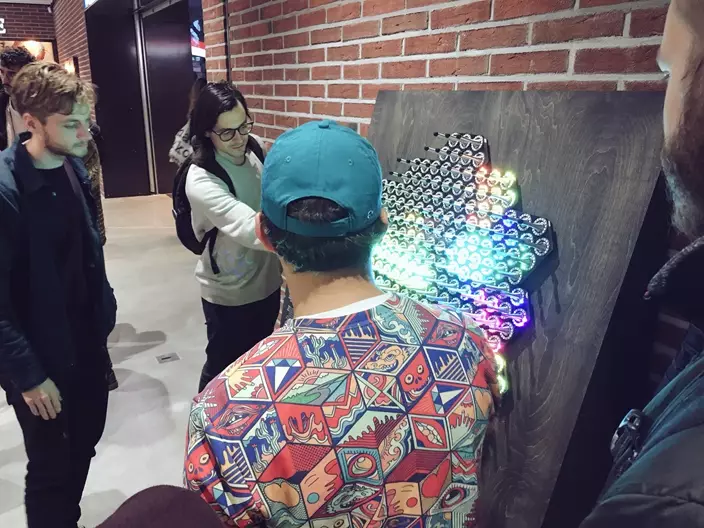
online photo
“I suggested we model the input parameters through wobbling the door stopper springs on my installation, and make an artistic rendition of the results.”

The artwork uses three circuit boards, Arduino micro-controllers, which measure if the springs are touched and display the graphics on the LED rings.
The build took two months between Baumgarten contacting TCQP and installation, where it is now on display at Aalto University in Helsinki.
“Most of the work went into making my life easier, for example I learned how to design my own printed circuit boards so I didn’t need to solder as much,” Baumgarten said. “It’s also quite fun to order 500 door stopper springs from Amazon.”
Baumgarten’s previous work includes many intuitive ways to use household items for interactive games, such as an electrically-charged kitchen knife and rubber bands which interact with on-screen characters.
Baumgarten, whose background is in artificial intelligence and commercial game development, has seen his work featured at gaming conferences, art exhibitions and at events such as the Toronto International Film Festival and Burning Man.
If you would like to see more from Baumgarten, check out his Twitter page and website.
BALTIMORE (AP) — Cyclist Barnaby Wickham has collected more than 700 lost hubcaps, mostly on bike rides around Baltimore. They have inspired a quest to turn litter into art, including Christmas wreaths, a giant fish and a large head of Snoopy.
It is a hobby that developed nearly two years ago from his love of cycling and the joy of making something out of the junk he has collected.
“I think it’s sort of the excitement of the hunt, for one thing," Wickham said. "I love to cycle. I love Baltimore. I love to go out in Baltimore, and there’s just enough hubcaps and other things like car grills to be interesting, but not so many that it’s too easy.”
Wickham, 54, says he can't quite explain it, but one day while cycling in early 2024 he decided to bring home a lost hubcap. Since then, he has started stringing hubcaps he comes across to his backpack.
“I keep track of them, and I have a Google map," he said. "I pin locations where I find each of them.”
Others in his community who have taken an interest in his projects let him know when they see hubcaps by the road. Now, Wickham keeps a list of them that he refers to as “hubcaps in the wild.”
He wants to do the collecting himself. That is part of the joy.
Wickham also gets a hand from his wife, Kate, who helps hold materials during construction and offers opinions.
“I’m just support team, and occasionally the cautious person who says, you can’t drive on this road, you can’t bike on this road or whatever. So I’m just more kind of supporting his love of trying new things,” she said.
It might seem like an odd pastime, but Baltimore has been known to celebrate its quirky side. The city is known for director John Waters, whose offbeat films earned him the moniker of the “Pope of Trash.” Baltimore is also home to the American Visionary Art Museum, which is nationally recognized as a repository for the work of self-taught artists and intuitive art.
Wickham, who works in marketing for a defense technology company, stores his finds in his garage and works in his front yard. He uses expanded metal as a framework, with sheet metal with holes and wiring to hold the sheets in place. He uses zip ties to link the hubcaps on the sheet metal.
“It’s all held together with zip ties," he said. "Hubcaps are filled with slots or holes, and so it’s easy to get a hold of them to hold them in place.”
His works are big. The head of Snoopy is 16 feet (4.9 meters) tall and about 21 feet (6.4 meters) wide.
While most of the hubcaps he uses were found in Baltimore, Wickham expands his range when he travels. Visits to see his son at Kent State University have added a few hubcaps with Ohio origins. A business trip to Italy, which included a bike tour in Rome, yielded a find. Wickham had to explain to his guide why he bothered to pick it up.
“And I was like, oh, I collect these. I’m just going to take this back with me. And I showed her a photo of the wreath, and she was like: ‘Oh, OK.’ Whenever anyone hears about it and understands it, they’re onboard," Wickham said.
Wickham donated two Christmas wreaths he made last year, one to the city and another to a nonprofit.
Wickham said the hobby has led to interactions with city residents. On one ride, a man who saw him pick up a hubcap, insistently signaled for him to come over to him. He wanted to let him know there was another hubcap nearby.
“It was clear to him that I was collecting these things, and all he wanted to do was help, to point one out for me. And there’s a lot of that,” Wickham said.
“It starts a lot of conversations, and it’s just something that people love to talk about," he said.
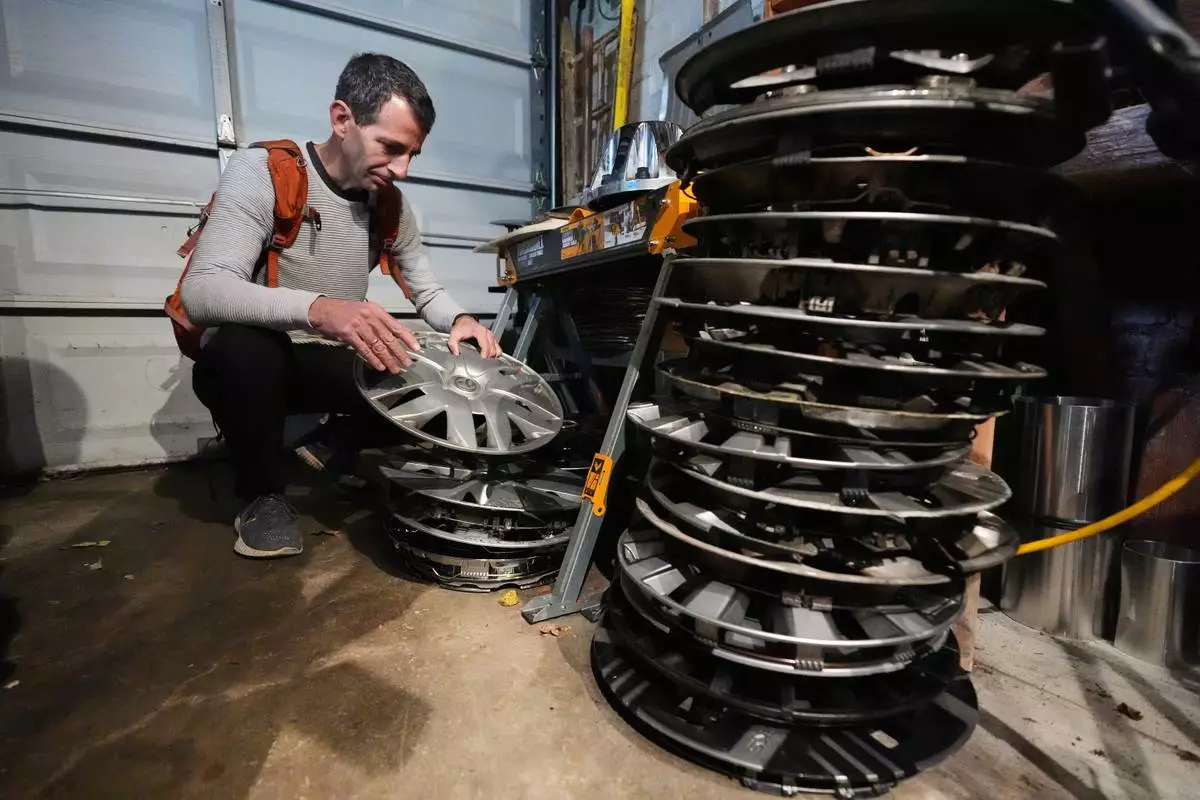
Cyclist Barnaby Wickham sorts through his collection of hubcaps stored in his garage, Thursday, Dec. 11, 2025, at his home in Baltimore. (AP Photo/Stephanie Scarbrough)

With hubcaps fastened to his backpack, cyclist Barnaby Wickham pedals through a neighborhood on his journey home, Thursday, Dec. 11, 2025, in Baltimore. (AP Photo/Stephanie Scarbrough)
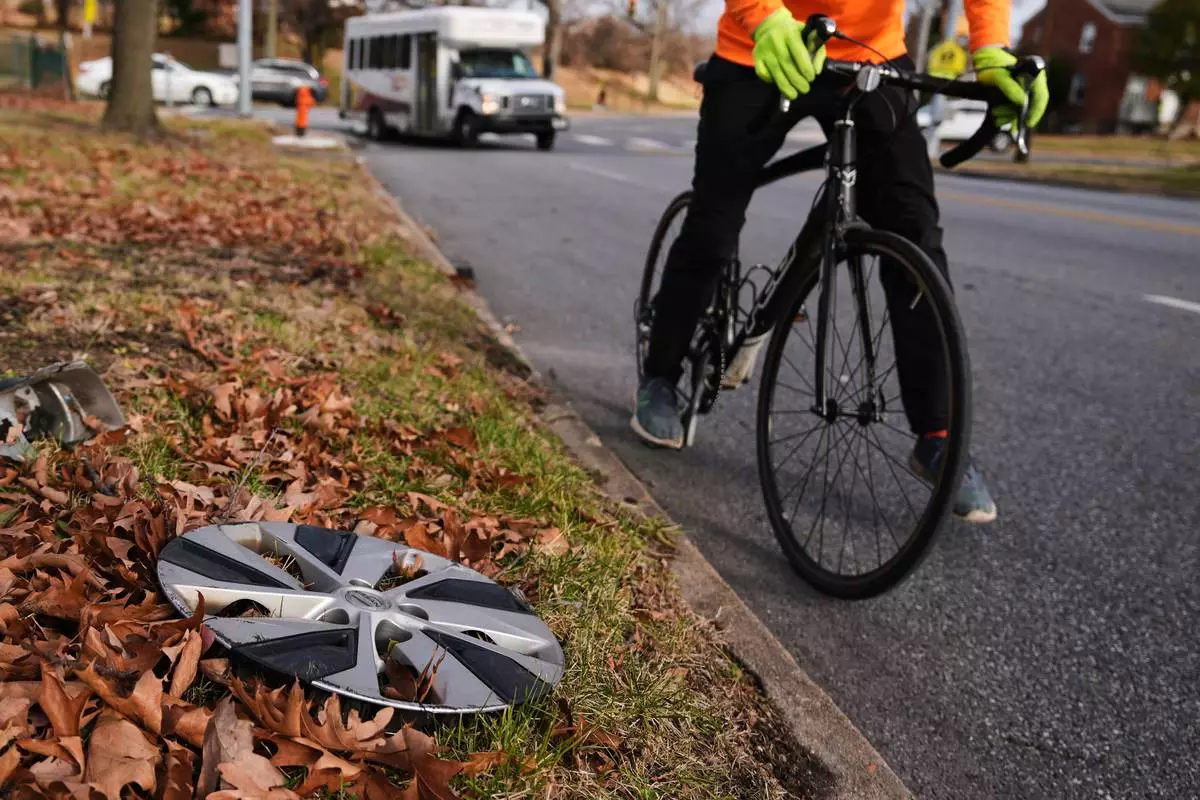
Cyclist Barnaby Wickham steps down and dismounts his bike after spotting a lost hubcap on the side of the road, Thursday, Dec. 11, 2025, in Baltimore. (AP Photo/Stephanie Scarbrough)
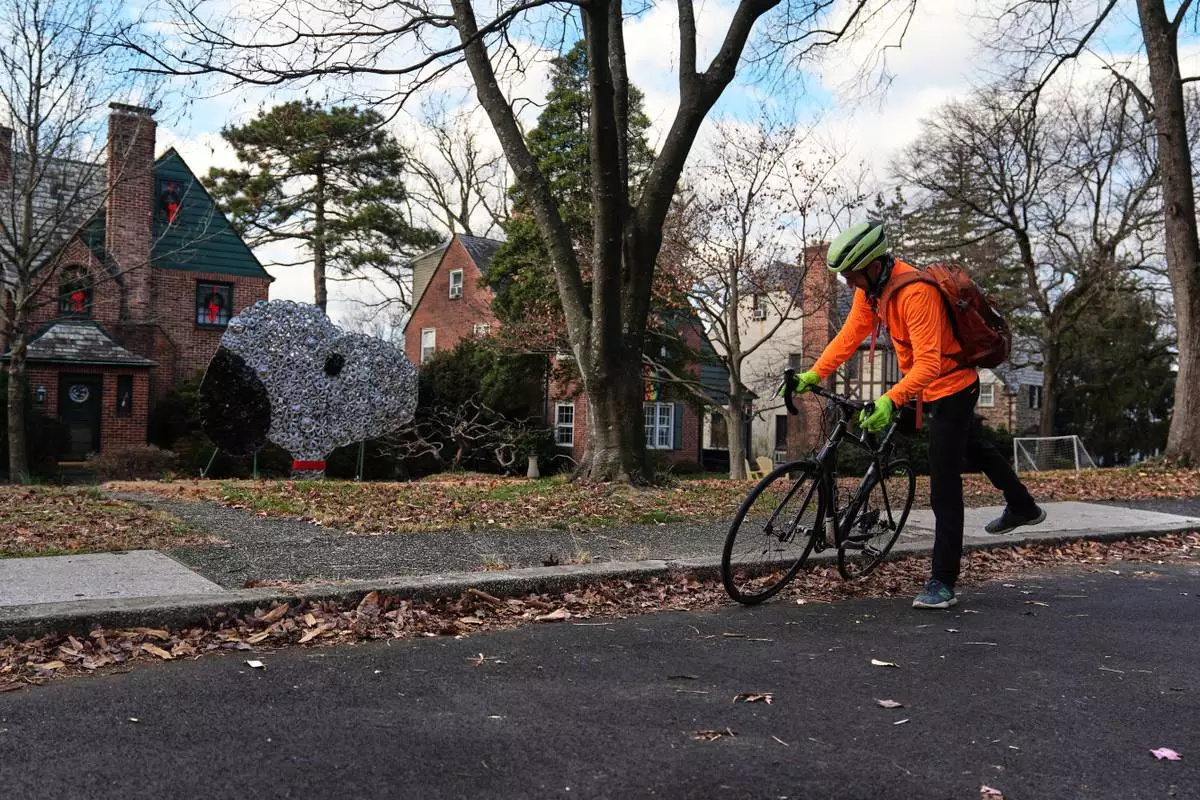
Cyclist Barnaby Wickham mounts his bike before riding off to collect lost hubcaps, Thursday, Dec. 11, 2025, in Baltimore. (AP Photo/Stephanie Scarbrough)
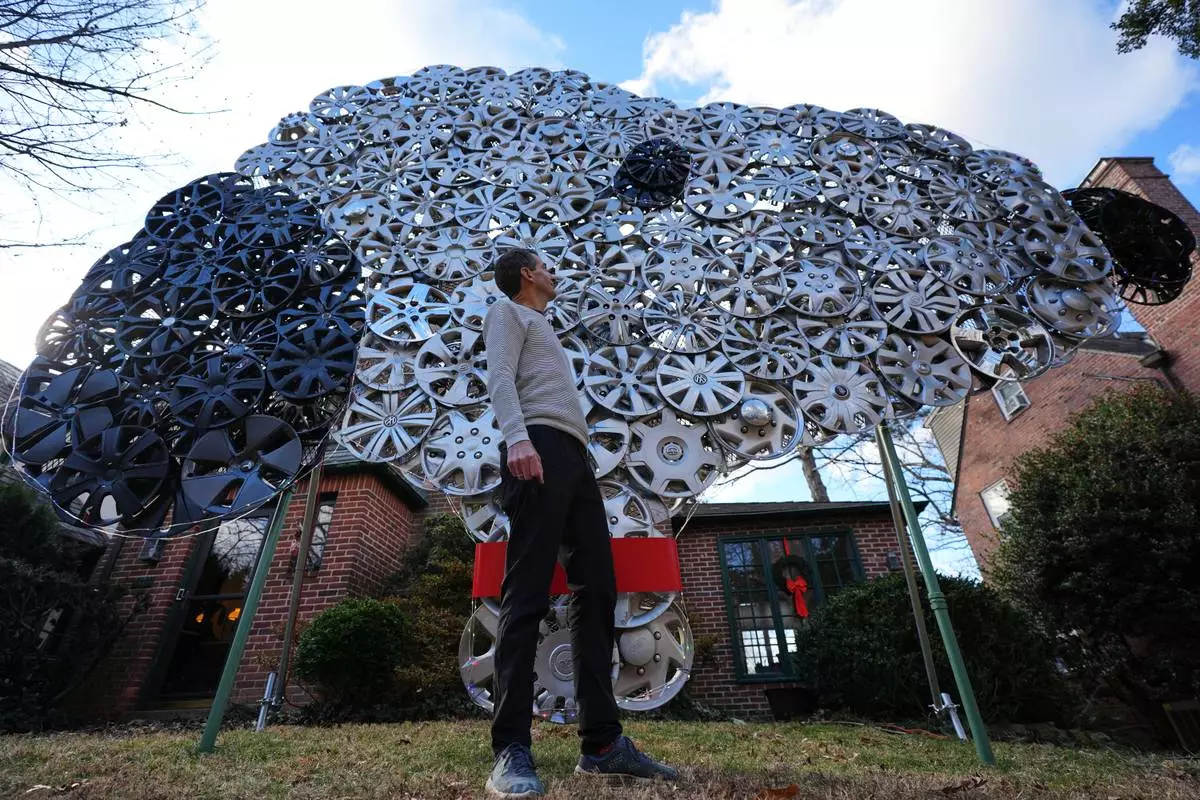
Cyclist Barnaby Wickham poses for a portrait in front of his art structure made from hubcaps, Thursday, Dec. 11, 2025, at his home in Baltimore. (AP Photo/Stephanie Scarbrough)

















